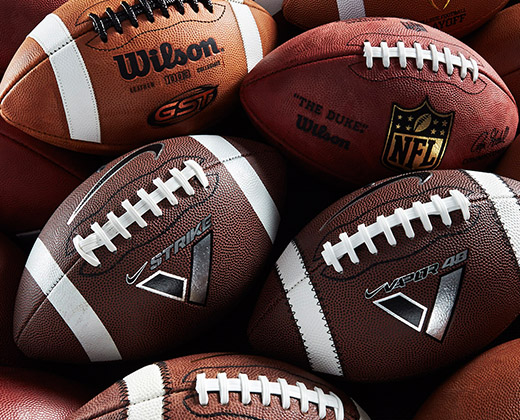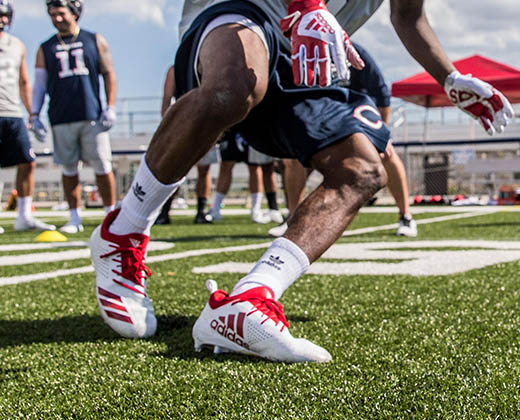How to Buy a Football
Your first step toward playing football is finding the right ball to match your level and style of play.
It’s an integral piece to one of the most popular team sports and a staple found in most American homes. We are talking, of course, about the football. This oblong piece of sports equipment can be enjoyed by athletes, children and parents alike, but regardless of whether you’re gearing up to bring home a championship on the gridiron or packing the car to head off to your next tailgate, not all footballs are created equal. So, before you purchase just any football, here are a few key qualities to consider.
MATERIAL
Starting with the outermost layer, what your football is made of can significantly affect its worth and durability. The main material options for most footballs are foam, rubber (synthetic leather) and genuine leather. Each has specific characteristics that fulfill different needs, allowing anyone to enjoy memorable moments tossing the old pigskin around.
FOAM
Foam footballs are low-cost and very lightweight. The soft material makes them great for young children who are just learning to throw and catch or for more confined spaces, such as in a small yard near windows or between vehicles at a tailgate. A higher quality foam can be used for recreational games as well.
Foam footballs are not as durable as their rubber and leather counterparts, but remain a favorite among fans due to their affordability and ease of replacement.
RUBBER OR SYNTHETIC LEATHER
For players looking for a durable, effective football without breaking the bank, rubber and synthetic leather options are a great choice. These materials are much more durable than foam and are more affordable than genuine leather. The exterior texture is formulated for enhanced grip, making these footballs an ideal choice for practice equipment. Rubber and synthetic leather are also more moisture-resistant than genuine leather, eliminating the chances of footballs swelling if left out in harsh conditions.
GENUINE LEATHER
Footballs made from genuine leather are considered to be of the highest quality. Because of the tanning process used in treating the leather, these footballs have an inherent tackiness to them, making them exceptionally easy to grip when dry. Genuine leather footballs are also the most durable option available, but with that durability comes a higher price point. Most leather footballs should be saved for game play or exclusive practice play.
While your football’s casing should be your main concern when it comes to materials, you should also take into consideration the lining and bladder. Foam footballs will not have these options available, but if you think you would enjoy the benefits of a rubber or synthetic leather or genuine leather football, look for models featuring a multi-layered lining and butyl bladder. These features will help the football retain its shape and structure better over time.
SIZING
When it comes to choosing the right size of football, there are a few options available. While you should take the thrower’s hand size into consideration, the easiest way to determine which size football is best is by determining the average age of the player. Most footballs are classified for use among four main age groups that leagues are normally divided into:
- Pee Wee Footballs: Best for players ages 6-9
- Junior Footballs: Best for players ages 9-12
- Youth Footballs: Best for players ages 12-14
- Official Footballs: Best for players 14 and older
Official footballs are approved at the collegiate and pro levels as well.
Following these guidelines can help you choose a football that feels right in your hands and fits your playing needs. Once you’ve picked out a quality ball, your journey toward that championship can begin.








